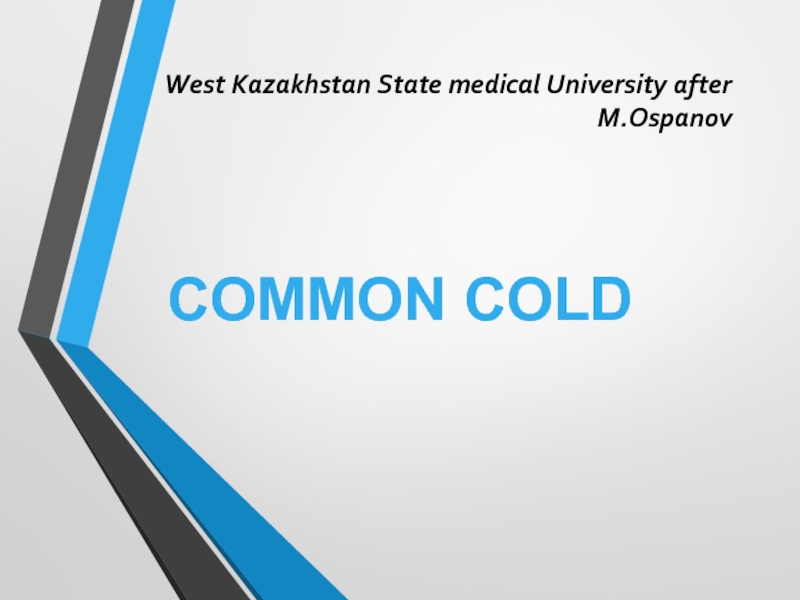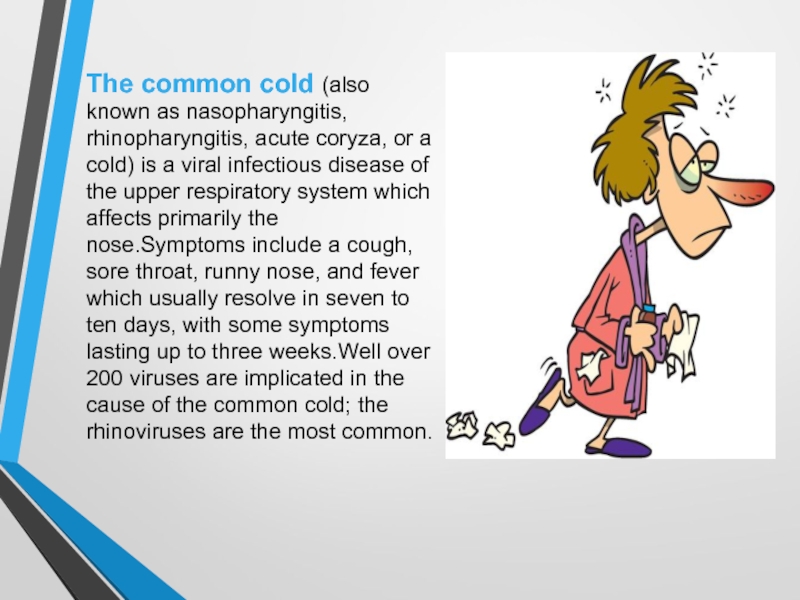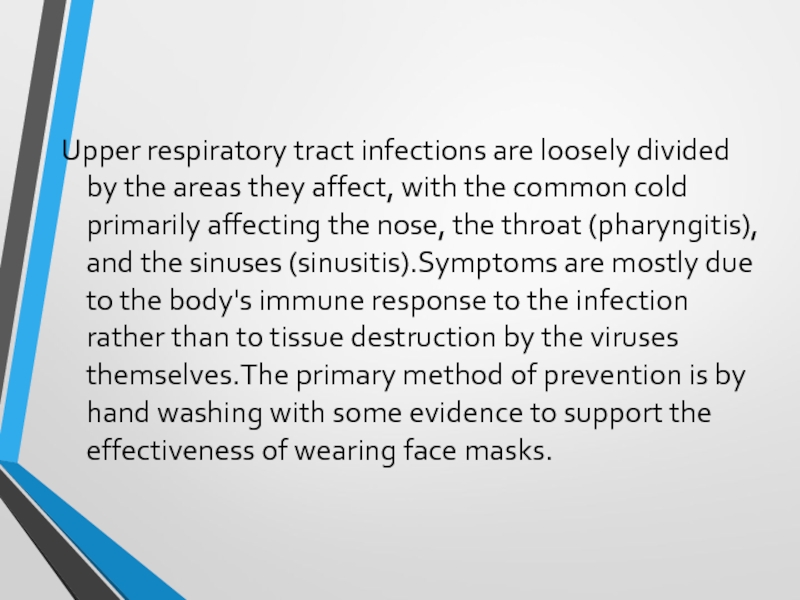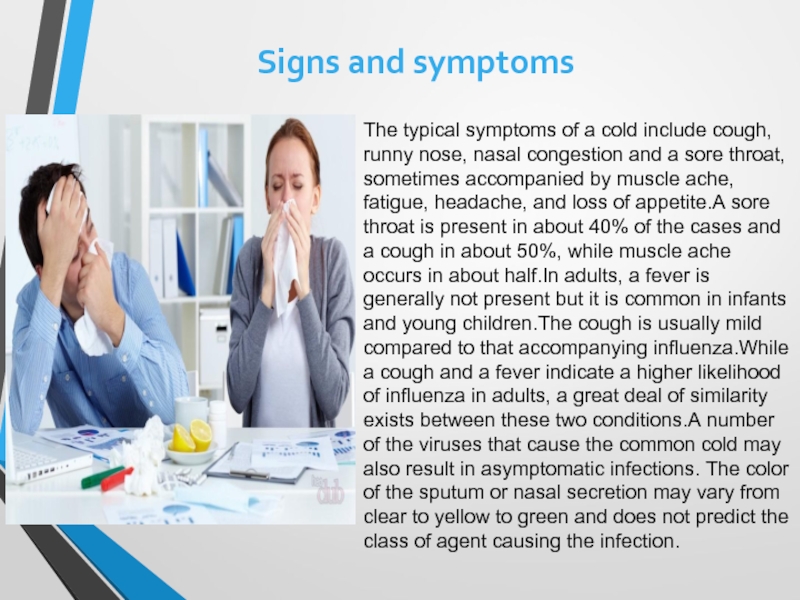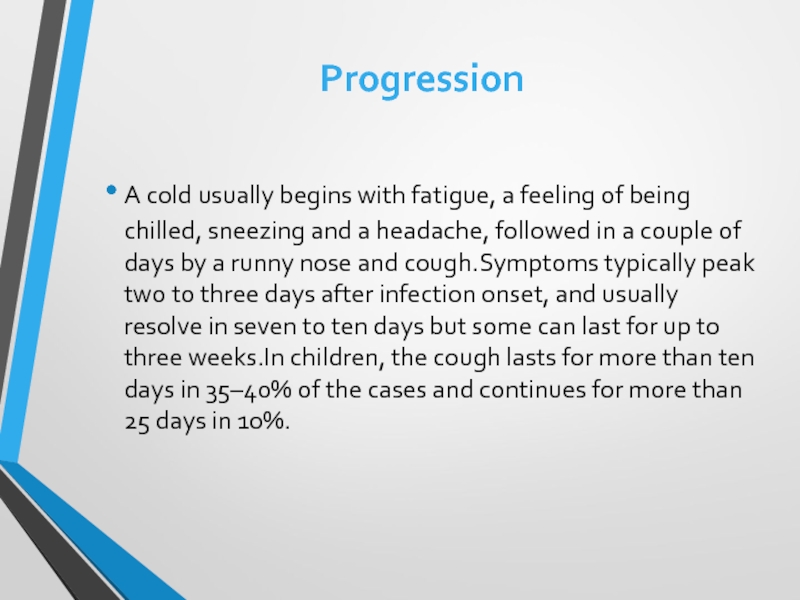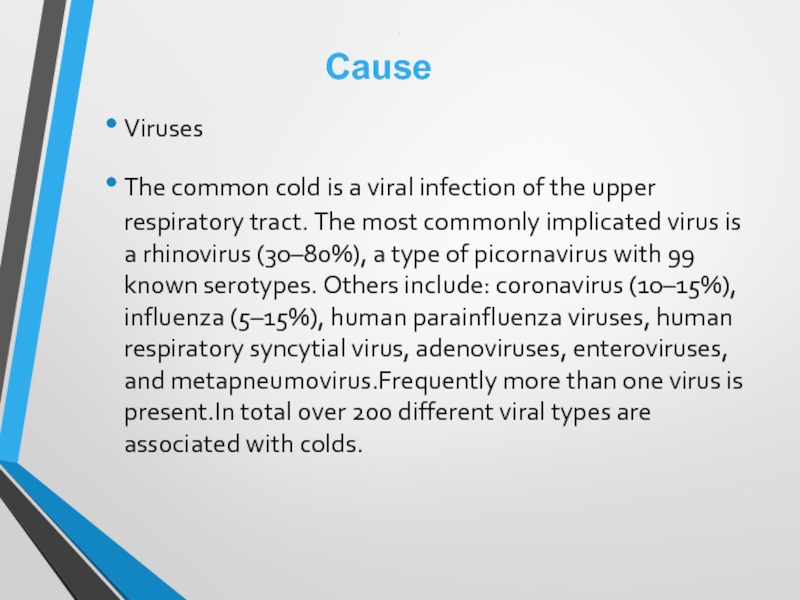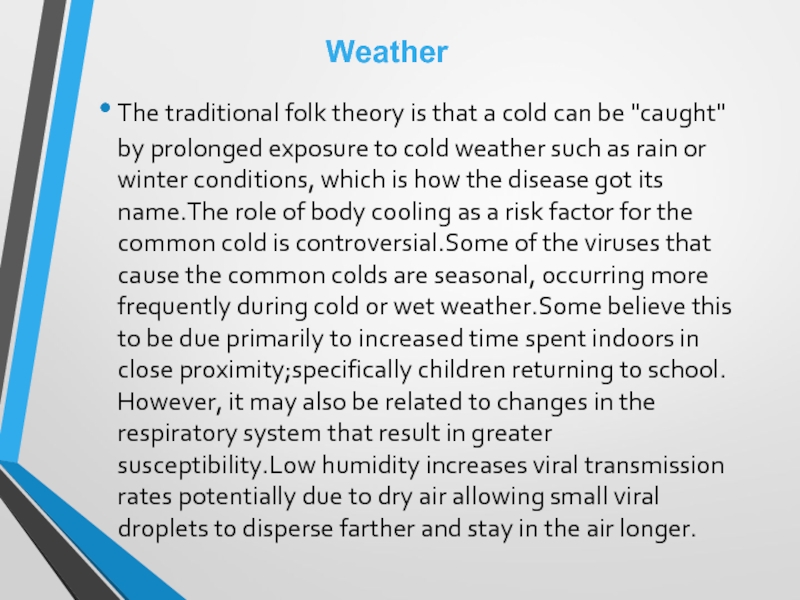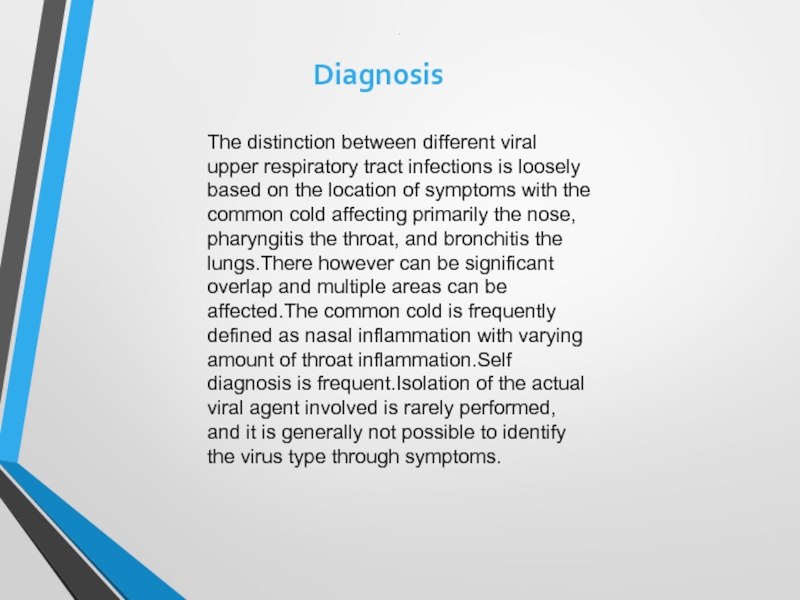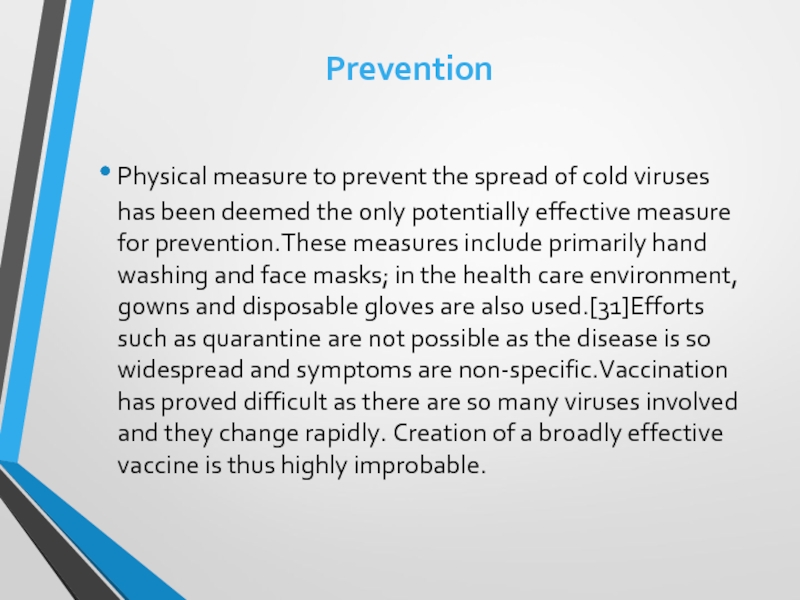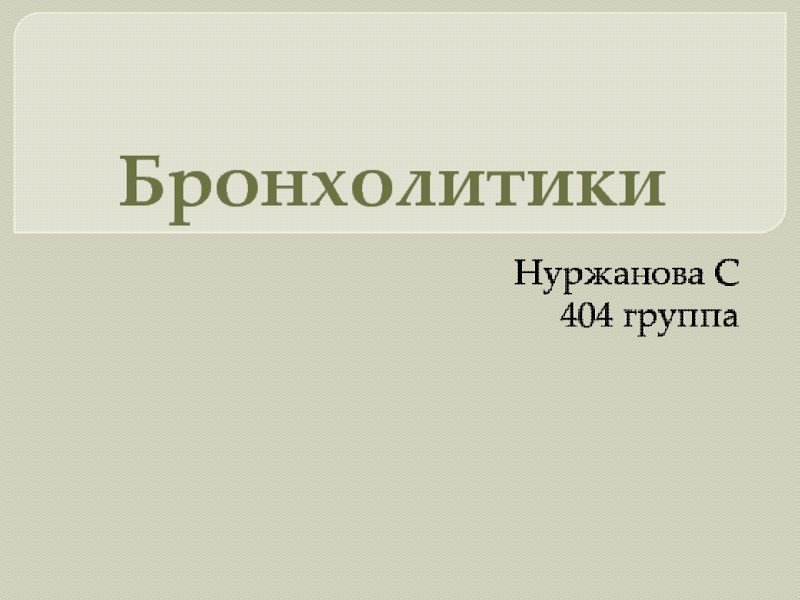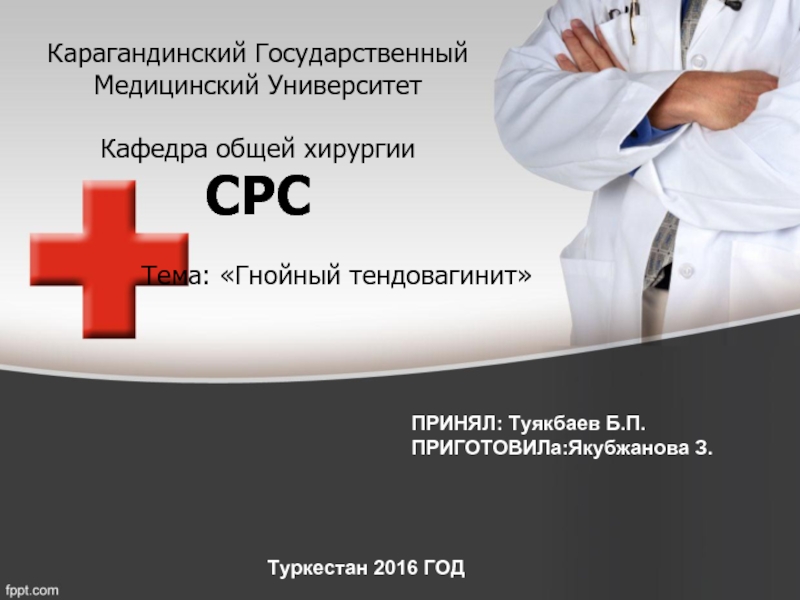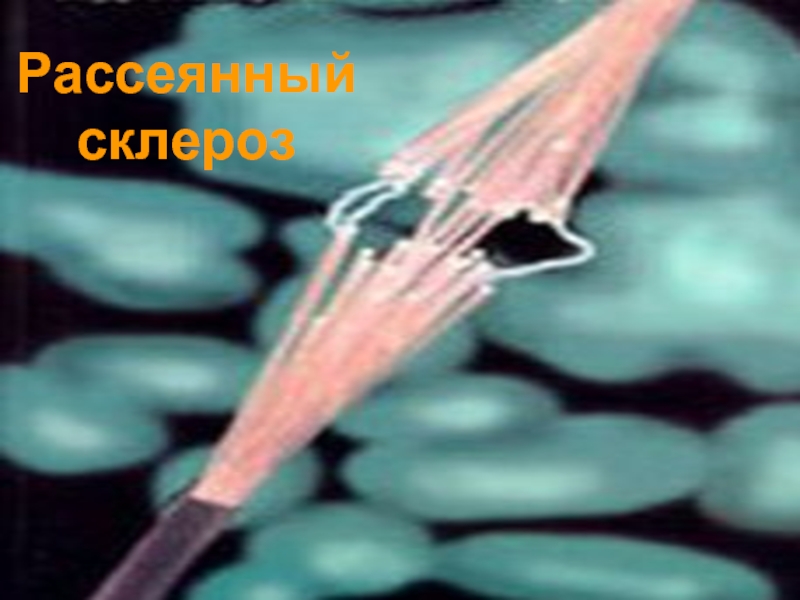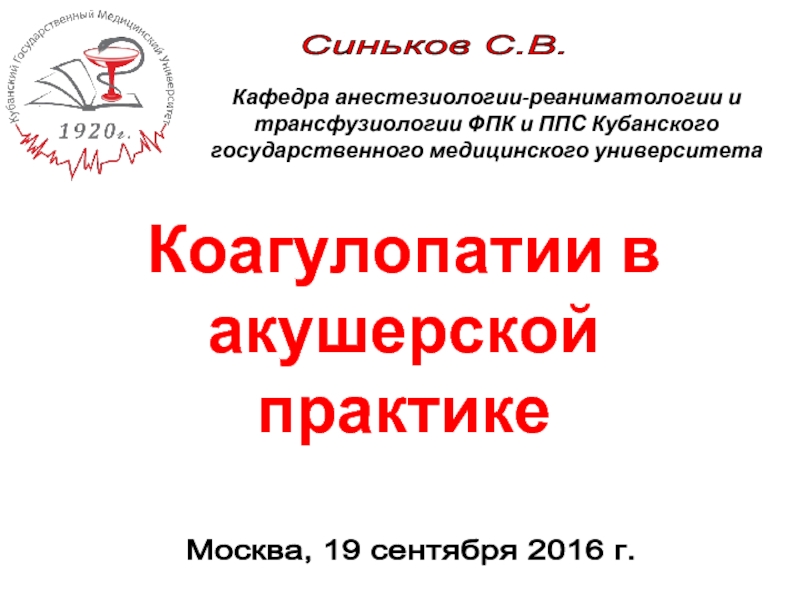- Главная
- Разное
- Дизайн
- Бизнес и предпринимательство
- Аналитика
- Образование
- Развлечения
- Красота и здоровье
- Финансы
- Государство
- Путешествия
- Спорт
- Недвижимость
- Армия
- Графика
- Культурология
- Еда и кулинария
- Лингвистика
- Английский язык
- Астрономия
- Алгебра
- Биология
- География
- Детские презентации
- Информатика
- История
- Литература
- Маркетинг
- Математика
- Медицина
- Менеджмент
- Музыка
- МХК
- Немецкий язык
- ОБЖ
- Обществознание
- Окружающий мир
- Педагогика
- Русский язык
- Технология
- Физика
- Философия
- Химия
- Шаблоны, картинки для презентаций
- Экология
- Экономика
- Юриспруденция
The common cold презентация
Содержание
- 1. The common cold
- 2. The common cold (also known
- 3. Upper respiratory tract infections are loosely divided
- 4. Signs and symptoms The typical symptoms
- 5. A cold usually begins with fatigue, a
- 6. . Viruses The common cold is a
- 7. . The traditional folk theory is that
- 8. . Diagnosis The distinction between different viral
- 9. Prevention Physical measure to prevent the spread
Слайд 2
The common cold (also known as nasopharyngitis, rhinopharyngitis, acute coryza, or
a cold) is a viral infectious disease of the upper respiratory system which affects primarily the nose.Symptoms include a cough, sore throat, runny nose, and fever which usually resolve in seven to ten days, with some symptoms lasting up to three weeks.Well over 200 viruses are implicated in the cause of the common cold; the rhinoviruses are the most common.
Слайд 3Upper respiratory tract infections are loosely divided by the areas they
affect, with the common cold primarily affecting the nose, the throat (pharyngitis), and the sinuses (sinusitis).Symptoms are mostly due to the body's immune response to the infection rather than to tissue destruction by the viruses themselves.The primary method of prevention is by hand washing with some evidence to support the effectiveness of wearing face masks.
Слайд 4Signs and symptoms
The typical symptoms of a cold include cough,
runny nose, nasal congestion and a sore throat, sometimes accompanied by muscle ache, fatigue, headache, and loss of appetite.A sore throat is present in about 40% of the cases and a cough in about 50%, while muscle ache occurs in about half.In adults, a fever is generally not present but it is common in infants and young children.The cough is usually mild compared to that accompanying influenza.While a cough and a fever indicate a higher likelihood of influenza in adults, a great deal of similarity exists between these two conditions.A number of the viruses that cause the common cold may also result in asymptomatic infections. The color of the sputum or nasal secretion may vary from clear to yellow to green and does not predict the class of agent causing the infection.
Слайд 5A cold usually begins with fatigue, a feeling of being chilled,
sneezing and a headache, followed in a couple of days by a runny nose and cough.Symptoms typically peak two to three days after infection onset, and usually resolve in seven to ten days but some can last for up to three weeks.In children, the cough lasts for more than ten days in 35–40% of the cases and continues for more than 25 days in 10%.
Progression
Слайд 6.
Viruses
The common cold is a viral infection of the upper respiratory
tract. The most commonly implicated virus is a rhinovirus (30–80%), a type of picornavirus with 99 known serotypes. Others include: coronavirus (10–15%), influenza (5–15%), human parainfluenza viruses, human respiratory syncytial virus, adenoviruses, enteroviruses, and metapneumovirus.Frequently more than one virus is present.In total over 200 different viral types are associated with colds.
Cause
Слайд 7.
The traditional folk theory is that a cold can be "caught"
by prolonged exposure to cold weather such as rain or winter conditions, which is how the disease got its name.The role of body cooling as a risk factor for the common cold is controversial.Some of the viruses that cause the common colds are seasonal, occurring more frequently during cold or wet weather.Some believe this to be due primarily to increased time spent indoors in close proximity;specifically children returning to school. However, it may also be related to changes in the respiratory system that result in greater susceptibility.Low humidity increases viral transmission rates potentially due to dry air allowing small viral droplets to disperse farther and stay in the air longer.
Weather
Слайд 8.
Diagnosis
The distinction between different viral upper respiratory tract infections is loosely
based on the location of symptoms with the common cold affecting primarily the nose, pharyngitis the throat, and bronchitis the lungs.There however can be significant overlap and multiple areas can be affected.The common cold is frequently defined as nasal inflammation with varying amount of throat inflammation.Self diagnosis is frequent.Isolation of the actual viral agent involved is rarely performed, and it is generally not possible to identify the virus type through symptoms.
Слайд 9Prevention
Physical measure to prevent the spread of cold viruses has been
deemed the only potentially effective measure for prevention.These measures include primarily hand washing and face masks; in the health care environment, gowns and disposable gloves are also used.[31]Efforts such as quarantine are not possible as the disease is so widespread and symptoms are non-specific.Vaccination has proved difficult as there are so many viruses involved and they change rapidly. Creation of a broadly effective vaccine is thus highly improbable.
